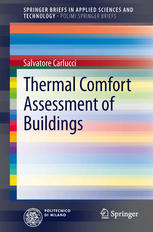

Most ebook files are in PDF format, so you can easily read them using various software such as Foxit Reader or directly on the Google Chrome browser.
Some ebook files are released by publishers in other formats such as .awz, .mobi, .epub, .fb2, etc. You may need to install specific software to read these formats on mobile/PC, such as Calibre.
Please read the tutorial at this link: https://ebookbell.com/faq
We offer FREE conversion to the popular formats you request; however, this may take some time. Therefore, right after payment, please email us, and we will try to provide the service as quickly as possible.
For some exceptional file formats or broken links (if any), please refrain from opening any disputes. Instead, email us first, and we will try to assist within a maximum of 6 hours.
EbookBell Team

5.0
68 reviewsA number of metrics for assessing human thermal response to climatic conditions have been proposed in scientific literature over the last decades. They aim at describing human thermal perception of the thermal environment to which an individual or a group of people is exposed. More recently, a new type of “discomfort index” has been proposed for describing, in a synthetic way, long-term phenomena. Starting from a systematic review of a number of long-term global discomfort indices, they are then contrasted and compared on a reference case study in order to identify their similarities and differences and strengths and weaknesses. Based on this analysis, a new short-term local discomfort index is proposed for the American Adaptive comfort model. Finally, a new and reliable long-term general discomfort index is presented. It is delivered in three versions and each of them is suitable to be respectively coupled with the Fanger, the European Adaptive and the American Adaptive comfort models.